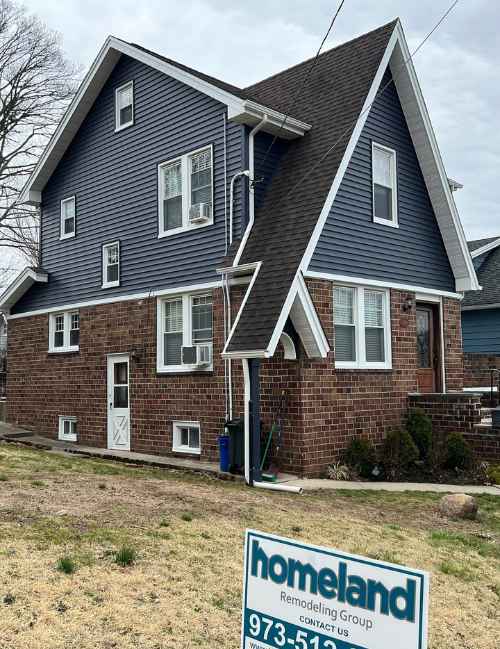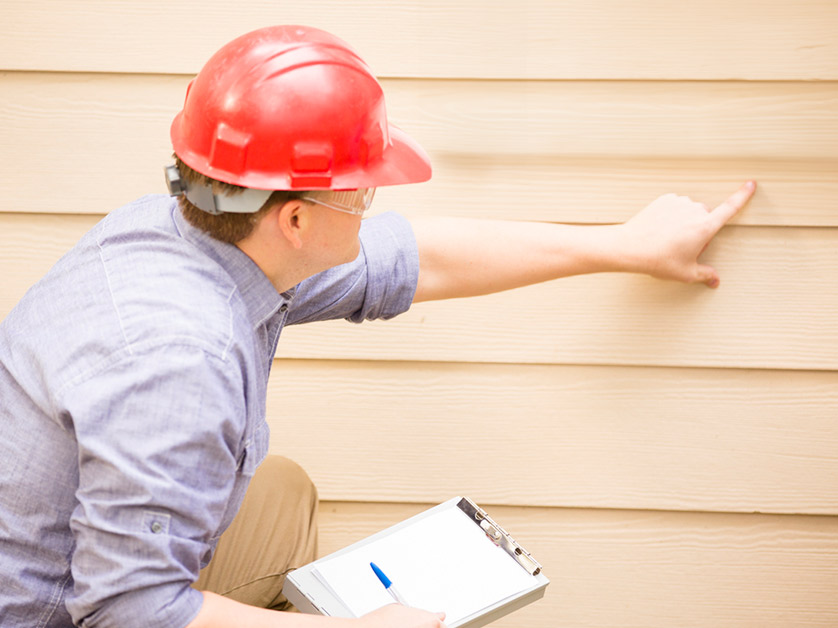Morris Siding Contractor Committed to Excellence in Every Project
Morris Siding Contractor Committed to Excellence in Every Project
Blog Article
The Vital Overview to the Numerous Kinds of House Siding and Their Special Advantages
In the world of home improvement, choosing the appropriate siding is a vital choice that impacts both visual allure and functional performance. With so lots of alternatives to consider, which home siding material really stands out for your certain job?
Wood Siding
Wood house siding, a popular selection for property exteriors, provides a timeless visual that incorporates natural charm with structural stability. This exterior siding product is readily available in numerous designs, including clapboard, tiles, and board-and-batten, permitting house owners to customize their façade to match their design choices. Wood siding is usually crafted from resilient species such as cedar, redwood, or ache, which are recognized for their durability and capability to endure environmental stress factors.
Among the main benefits of wood siding is its excellent insulation residential properties, which can add to energy effectiveness and reduced heating costs. In addition, wood siding is biodegradable, making it an ecologically friendly alternative when sourced sustainably. Routine maintenance, consisting of paint or staining, can lengthen its lifespan and boost its appearance, allowing home owners to protect the natural appeal of the wood.
Nevertheless, possible disadvantages consist of sensitivity to insects, rot, and weather damages, necessitating adequate therapy and upkeep - morris siding contractor. In spite of these problems, when properly taken care of, timber exterior siding can give a attractive and sturdy service that improves the personality of a home while using a warm, welcoming ambience

Vinyl House Siding
Vinyl siding has become a leading choice for home owners seeking a low-maintenance outside choice that combines longevity and cost. This versatile product is crafted from polyvinyl chloride (PVC), making it resistant to different climate condition, including wetness and UV rays. Consequently, vinyl home siding does not warp, rot, or discolor, making sure durable visual allure.
One of the main advantages of vinyl home siding is its extensive series of styles and shades, allowing house owners to achieve the preferred appearance for their residential property without the need for regular repainting. In addition, vinyl exterior siding is very easy to install, which can substantially lower labor expenses throughout building and construction or remodelling tasks.
Vinyl house siding also contributes to power efficiency. Many alternatives feature insulation support, which improves thermal efficiency, aiding to preserve comfy indoor temperature levels and potentially reducing power expenses. Its smooth surface area assists in very easy cleaning, needing only periodic cleaning with a yard hose to remove dirt and debris.
Fiber Concrete House Siding
Fiber cement home siding has actually gotten grip among builders and property owners alike as a result of its impressive combination of durability and aesthetic flexibility. Made up of a mix of sand, concrete, and cellulose fibers, this home siding choice is engineered to endure severe weather, including high winds, hefty rainfall, and temperature fluctuations, making it a long-lasting selection for property exteriors.

One of the key advantages of fiber cement siding is its resistance to bugs, such as termites, and its non-combustible nature, offering enhanced fire safety and security. morris siding contractor. Additionally, it is readily available in a broad selection of structures, shades, and styles, permitting property owners to attain their desired visual without compromising efficiency
One more advantage is its reduced maintenance needs; fiber cement exterior siding usually needs painting or discoloration every 5-10 years, which is less frequent than other products. Its durability contributes to a lower overall cost of ownership, as it lowers the need for constant fixings or replacements.
Ultimately, fiber concrete exterior siding stands for an exceptional investment for those looking for a resilient, eye-catching, and flexible outside choice, incorporating both type and function to improve the home's curb charm.
Metal Home Siding
The attraction of metal house siding exists in its durable toughness and modern-day visual appeal, making Get More Information it a preferred selection for contemporary style. Offered in products such as aluminum and steel, metal house siding provides an array of colors and finishes, permitting home owners to accomplish a personalized appearance that matches their style vision.

Energy efficiency is one more considerable advantage, as lots of metal exterior siding products are developed with insulation options that help regulate indoor temperatures. This can lead to reduced power prices with time. In addition, steel house siding is often recyclable, making it an environmentally friendly selection for sustainability-minded home owners.
The installation process for steel siding can be relatively simple, leading to a quicker turnaround time for building jobs. In general, metal home siding combines performance and design, making it a practical option for those seeking a aesthetically enticing and long-lasting exterior finish.
Brick and Rock Siding
Brick and stone home siding attracts attention as a classic selection that improves the aesthetic beauty of any home. Understood for their longevity and reduced maintenance, these products give an outstanding roi while raising the property's curb appeal. Available in various colors, appearances, and patterns, block and recommended you read rock can be tailored to use this link suit varied architectural designs, from standard to contemporary.
Among the main advantages of brick and stone house siding is their energy efficiency. Both products have natural insulating properties that assist control interior temperatures, potentially minimizing heating & cooling prices. Furthermore, they provide remarkable fire resistance contrasted to other exterior siding alternatives, contributing to improved security.
One more advantage is their long life. Block and rock can last for years, typically needing very little maintenance past periodic cleansing. Unlike timber siding, they are unsusceptible bugs and rot, making certain a long-lasting exterior that stands up to the components.
Verdict
In summary, the choice of home siding dramatically influences a home's visual appeal, energy efficiency, and maintenance demands. Each type of exterior siding-- whether wood, vinyl, fiber metal, cement, or brick and stone-- uses unique benefits tailored to numerous house owner preferences and environmental conditions. Comprehending these choices allows notified choices that enhance both the sturdiness and visual appeal of domestic exteriors. Ultimately, choosing the best exterior siding is vital for accomplishing a balance in between capability and style in domestic architecture.
One of the key benefits of timber siding is its exceptional insulation properties, which can add to power efficiency and reduced home heating costs. Furthermore, timber siding is naturally degradable, making it an ecologically pleasant alternative when sourced sustainably.One of the primary benefits of steel home siding is its resistance to numerous environmental aspects.Power efficiency is one more substantial benefit, as numerous metal house siding items are designed with insulation choices that assist manage interior temperatures. Each type of house siding-- whether wood, vinyl, fiber steel, concrete, or block and stone-- uses unique benefits customized to numerous homeowner preferences and ecological problems.
Report this page